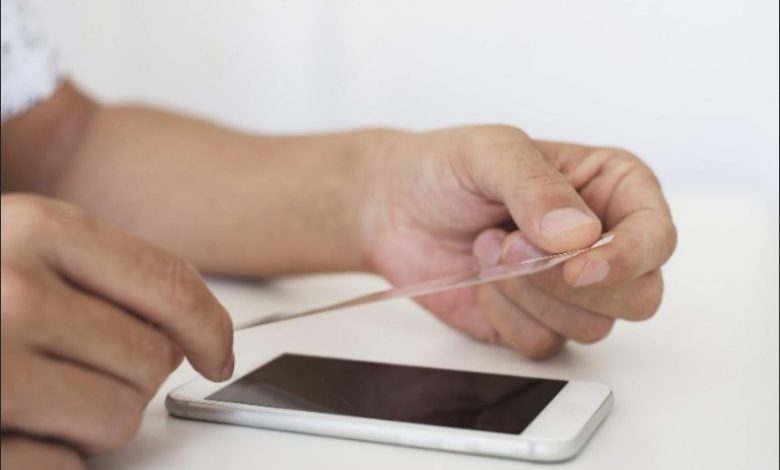What is a Nano Glass Screen Protector & How it Works

A nano glass screen protector is a thin layer of tempered glass or film that is applied to the surface of a device’s screen to protect it from scratches, cracks, and other types of damage. These screen protectors are designed to be ultra-thin and transparent, providing a nearly invisible layer of protection for the device’s screen.
The purpose of using a nano glass screen protector is to extend the life of a device’s screen and to keep it looking new for as long as possible. By preventing damage from scratches, cracks, and other sources, a nano glass screen protector helps to maintain the value and appearance of the device, making it a popular choice for many people.
Material and Construction
Nano glass screen protectors are typically made from a type of tempered glass or a specialized film material. The exact composition of the material will vary depending on the manufacturer and the specific product, but most nano glass screen protectors are designed to provide a high level of protection against scratches, cracks, and other types of damage.
The manufacturing process of nano glass custom screen protectors typically involves cutting the material to the correct size and shape, then treating it with a special chemical coating that helps to bond it to the device’s screen. This coating also provides an additional layer of protection for the screen, helping to prevent damage from scratches and cracks.
In the case of tempered glass screen protectors, the glass is subjected to a high-heat treatment that makes it stronger and more durable. This process also gives the glass a hardness rating, which is a measure of its ability to resist scratches and other types of damage. Film-based screen protectors are usually made from a specialized plastic material that is designed to provide a high level of protection against scratches and cracks.
Regardless of the specific material or construction process, the goal of a nano glass screen protector is to provide a thin, clear, and durable layer of protection for a device’s screen. This helps to keep the screen looking new for as long as possible, while also helping to maintain the value of the device.
Advantages of nano glass screen protectors
- Improved Durability: One of the main benefits of using a nano glass screen protector is improved durability. The tempered glass or specialized film used in these protectors is designed to be stronger and more resistant to scratches, cracks, and other types of damage, helping to extend the life of the device’s screen.
- High-Resistance to Scratches and Shocks: The specialized coating used on nano glass screen protectors also provides an extra layer of protection against scratches and shocks, helping to prevent damage from everyday wear and tear.
- Clear and Transparent Surface: Unlike some other types of screen protectors, nano glass screen protectors are designed to be nearly invisible, providing a clear and transparent surface for the device’s screen.
- Easy Installation and Removal: Many nano glass screen protectors are designed to be easy to install and remove, making them a convenient choice for people who want to protect their device’s screen without having to go through a complicated process.
- Improved Touchscreen Sensitivity: Some nano glass screen protectors are designed to maintain or even improve the touchscreen sensitivity of a device, providing a smooth and responsive experience for the user.
- Maintenance and Care: Keeping a nano glass screen protector clean and free of cracks or other damage is typically a simple and straightforward process, making it a low-maintenance option for people who want to protect their device’s screen.
How nano glass screen protectors work:
A nano glass screen protector provides protection for a device’s screen in two ways: through a physical layer of protection and a chemical layer of protection.
- Physical layer of protection: The tempered glass or specialized film used in a nano glass screen protector provides a physical barrier between the device’s screen and any sources of damage, such as scratches, cracks, and impacts. The hardness rating of the tempered glass or the thickness of the film will determine the level of protection provided by the physical layer.
- Chemical layer of protection: The specialized coating applied to a nano glass screen protector also provides a chemical layer of protection, helping to prevent damage from scratches and cracks. This coating is designed to bond to the device’s screen, forming a strong and durable bond that helps to protect the screen from everyday wear and tear.
In addition to these two layers of protection, the adhesion and bonding process used to apply a nano glass screen protector also plays an important role in its ability to protect the device’s screen. The nano glass screen protector must be carefully positioned and aligned on the screen to ensure that it provides maximum coverage and protection.
Overall, the combination of a physical layer of protection and a chemical layer of protection, along with a proper adhesion and bonding process, makes a nano glass screen protector an effective solution for protecting a device’s screen from scratches, cracks, and other types of damage.
Types of nano glass screen protectors:
- Tempered Glass Screen Protectors: These are made from a type of tempered glass that is treated with heat to make it stronger and more resistant to scratches and cracks. Tempered glass screen protectors provide a high level of protection for the device’s screen, and are often favoured for their durability and scratch-resistant properties.
- Film-based Screen Protectors: These are made from a specialized film material that is designed to provide protection for a device’s screen. Film-based screen protectors are typically thinner and lighter than tempered glass screen protectors and are often favoured for their flexibility and ease of installation.
- Self-Healing Screen Protectors: These are a type of film-based screen protectors that are designed to “heal” from scratches and cracks over time. The self-healing properties of these screen protectors are due to a specialized material that is used in the film, which allows it to fill in and hide small scratches and cracks.
- Privacy Screen Protectors: These are a type of nano glass screen protector that is designed to provide privacy for the device’s screen by reducing the viewing angle. Privacy screen protectors are often favoured by people who use their devices in public places or in environments where they do not want others to see their screens.
- Anti-Glare Screen Protectors: These are a type of nano glass screen protector that are designed to reduce glare and reflections on the device’s screen. Anti-glare screen protectors are often favoured by people who use their devices in bright environments or outdoors, where glare and reflections can be a problem.
Regardless of the specific type of nano glass screen protector, the goal is always the same: to provide a high level of protection for a device’s screen, while also preserving its appearance and functionality.
Maintenance and Care of nano glass screen protectors:
- Cleaning: It’s important to regularly clean a nano glass screen protector to remove any dirt, debris, or fingerprints that may have accumulated on its surface. A soft, microfiber cloth and a gentle cleaner, such as water or a screen cleaner solution, are recommended for cleaning a nano glass screen protector.
- Avoiding Sharp Objects: To prevent scratches or cracks from forming on a nano glass screen protector, it’s important to avoid using sharp objects, such as fingernails, pens, or keys, to interact with the device’s screen.
- Removing Dust and Debris: It’s important to remove any dust or debris that may have accumulated under the nano glass screen protector, as this can cause bubbles to form and affect its adhesion to the device’s screen. A soft, clean cloth or a dust remover tool can be used to gently remove dust or debris from under the screen protector.
- Re-applying: If a nano glass screen protector begins to lift or peel away from the device’s screen, it may be necessary to re-apply it. This process typically involves removing the screen protector, cleaning the device’s screen and the screen protector, and then carefully aligning and re-applying the screen protector to the device’s screen.
- Replacing: If a nano glass screen protector becomes too damaged or worn to be effective, it may be necessary to replace it. This can typically be done by removing the old screen protector and installing a new one in its place.
By following these guidelines for maintenance and care, a nano glass screen protector can be expected to provide effective protection for a device’s screen for a long period of time.
Conclusion:
In conclusion, a nano glass screen protector is a type of protective film or layer that is designed to provide protection for a device’s screen. By using a specialized material, such as tempered glass or a specialized film, nano glass screen protectors can provide a high level of protection against scratches, cracks, and other forms of damage.
With various types of nano glass screen protectors available, including tempered glass, film-based, self-healing, privacy, and anti-glare screen protectors, it’s possible to find a screen protector that meets the specific needs and preferences of any user.
When it comes to maintenance and care, it’s important to regularly clean a nano glass screen protector, avoid using sharp objects to interact with the device’s screen, remove any dust or debris that may have accumulated under the screen protector, and re-apply or replace the screen protector as needed.
By using a nano glass screen protector, a device’s screen can be effectively protected against damage, preserving its appearance and functionality for a long period of time.




